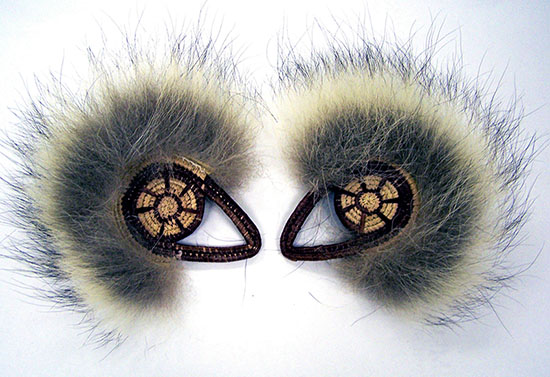Yup’ik Dance Fans

The Yup’ik people of Alaska use hand-held dance fans, called tegumiak, to emphasize the graceful motions of dancers’ arms during ceremonial dances. Yup’ik dancing is most commonly performed during the winter ceremony known as Kelek, or the Inviting-In Feast. The ceremony, held in the communal men’s house, honors the spirits of game animals and asks them to return to provide nourishment for the community.
Yup’ik dancing has a very specific structure, in that the dancers do not move their feet. They use their arms and upper body, along with the fans, to illustrate the stories told in song. Women stand, while men kneel or sit in front of them. Drummers and singers appear behind the dancers.
Traditionally, men’s fans are made of wooden hoops with snowy owl feathers and women’s fans have carved wooden animal or spirit faces surrounded by caribou fur and feathers. In contemporary dance, women use fans of woven grass accented with animal fur. This pair, made by Theresa Smith in Hooper Bay, Alaska, features wolf fur rather than caribou. The soft edges of the fur or feathers on the fans serve as specific purpose, as dancers want to avoid ripping the fabric between realms with their fingernails and letting in evil or bad spirits. If dance fans are not available, dancers will wear gloves for the same reason.
You can watch a video of Yup’ik dancing here:
Additional information for this post was provided by Evelyn Corbett (’24) of Dillingham, Alaska, an enrolled member of the Curyung Tribe of the Yup’ik Nation. She thanks her elder Sophie Woods of Dillingham, Alaska and her relative and elder Chuna McIntyre of Eek, Alaska.
